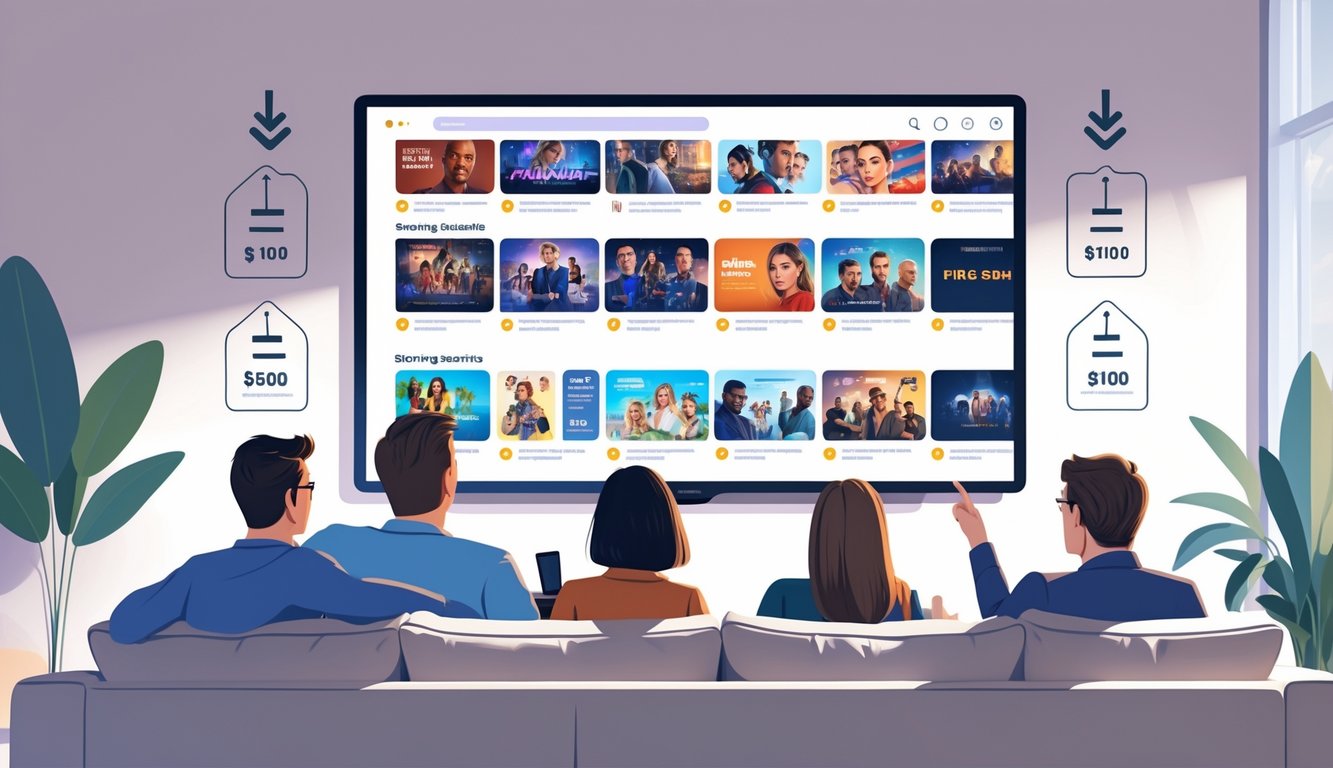
Features to Consider Before Cancelling
Nobody ever warns you about the deal-breakers lurking in the fine print, like that sad salad you keep forgetting in the fridge. One random policy change—password crackdown, download rules—suddenly your whole budget goes sideways. Subscription fatigue is a thing, and subscriber trends show people bail the second these features get worse.
Password Sharing
Remember when one cousin’s login powered eight TVs every weekend? Not anymore. Hulu, Netflix, Disney+, all of them—they’re clamping down, but none of their rules match. Netflix’s 2023 crackdown bumped churn by 2% (The Wrap said so), but is that lost money or just freeloaders getting kicked off?
Suddenly you see “Household Only” in bold, and your relatives text at midnight asking if the rules changed again. Some streaming editor at Tom’s Guide says device checks are just the start—next up, IP tracking. Hulu insiders joke about testing popups for household checks, which will totally wreck dorm room sharing. Why is breaking up with a service harder than finding your show’s next season? And why is it always the one show you don’t even like?
Cloud Storage & Download Options
Downloaded that weird indie doc for a flight, only for it to expire—no warning, nothing. Apple TV+ lets me keep 30 downloads at once, but Amazon yanks access if I swap devices too fast. Upgraded my phone, lost two seasons of reality TV. Disney+’s “unlimited” downloads? They disappear if I log out wrong.
Wall Street loves subscriber growth, but nobody juggling download limits cares. An HBO Max product manager said at a 2024 panel that server costs, not piracy, drive these limits. Local encryption beats cloud DRM for privacy, apparently. Screenshot your downloads, seriously. I lost seven movies mid-vacation. Policies change fast—sometimes right after earnings calls—and nobody ever emails a warning.
How Content Libraries Influence Value
Trying to track streaming libraries and price jumps is like chasing socks in a dryer—impossible and pointless. The real kicker? The whole “library” debate always circles back to what keeps us shelling out for subscriptions, even when we swear we’re quitting.
Exclusive Shows and New Releases
Every time I plan to cancel Netflix, some exclusive pops up and I cave. Originals and buzzy new movies multiply faster than my unread emails. It’s engineered to keep me (us?) hooked.
Studios care about subscriber growth and cultural clout, not memes or tweets. One hit can shift churn rates by 0.5%, Parrot Analytics says. I keep hoping for a hack, but nope: Want that new show? Pay up, no matter how many times I threaten to cancel.
Even ad-tier services chase exclusives—localized stuff, foreign-language hits, all of it. Seinfeld reruns don’t build loyalty the way a new “must-see” does, even though old favorites should matter more.
Originals vs. Licensed Content
Somebody always argues that giant libraries of old sitcoms are “value,” but honestly, original content wins. If “original” means 76 dating shows, fine. Licensed stuff takes up space unless nostalgia kicks in.
Price hikes make me debate: “Friends” marathon or some new sci-fi mini-series? If my family’s logins end up on random devices, executives just bake it into the $17.99 price anyway. Forbes says after big original launches, services justify price hikes because people stick around.
Nobody talks about this: even with tons of old favorites, services yank them for a month, then drop them back in to fake scarcity. It’s the pettiest game of hide-and-seek, and I’m the sucker paying for it.
When to Skip or Downgrade: Decision-Making Tips
Ever spend hours scrolling and never actually watch that “must-see” drama? These streaming hikes nibble my paycheck, but the worst part is paying for stuff I don’t even touch. Analysts say a 20% price bump sends most people running; only a quarter of us can handle 30-40% hikes without bailing (consumer research here).
Reviewing Your Viewing Habits
Last week, Netflix ran all day in the background—did I watch anything? My friend keeps a post-it tally of episodes per week. Silly, but it actually helps figure out if a basic plan is enough. Most of us, myself included, overestimate what we “need.” If Peacock’s ad plan just repeats old stuff, why bother?
The money drip is sneaky—credit card statements don’t show if I binge or just dabble. Advertisers track this: low-engagement users are most likely to downgrade after price hikes (cost-focused marketing insights). Sometimes you’re just subsidizing shows you’ll never watch, especially on premium plans with exclusive “first access” that quietly trickles down to standard plans anyway.
Can’t explain why Hulu’s true crime queue gives me guilt, but it does. So I pace myself, track it, and if my “completed” list is just reruns and cartoons, it’s time to skip or downgrade. Not because I want ads—just not paying more for Family Feud reruns on Paramount+.
Choosing the Right Plan for You
Honestly, the difference between basic and premium feels like bait every time. HD streaming and downloads are nice, but AppleTV+ jacked their ad-free tier 40% with zero warning (here’s the stat). Is Ted Lasso really worth that? And don’t get me started on simultaneous streams—my mom’s soap habit doesn’t justify $5 more a month if I’m the only one logged in.
Ad-supported packages—$7.99 for Peacock and Paramount+ (yep, confirmation)—blur the lines. Fewer perks, still better than cable, I guess. Standard plans aren’t always “middle ground”—sometimes it’s just basic with one shiny extra: two screens, maybe a whiff of 4K if you squint.
Half my “upgrades” end up forgotten, so I trick myself into thinking I’m getting value while never finishing a single movie. Easy trick: set a calendar alert for price hikes, then log what you actually watched that month. If you’re like me, those numbers are weirder than you want to admit—but at least you know if a downgrade makes sense before auto-renewal sneaks up again.



